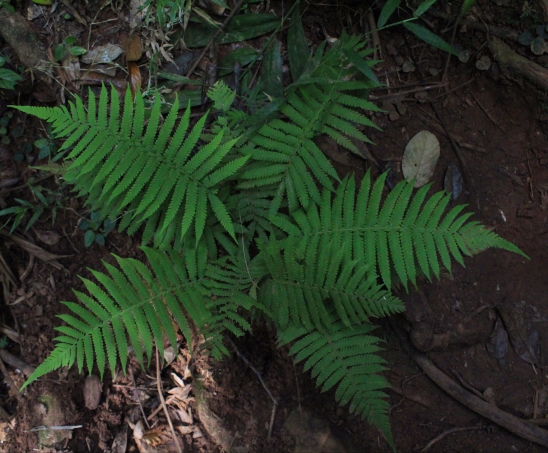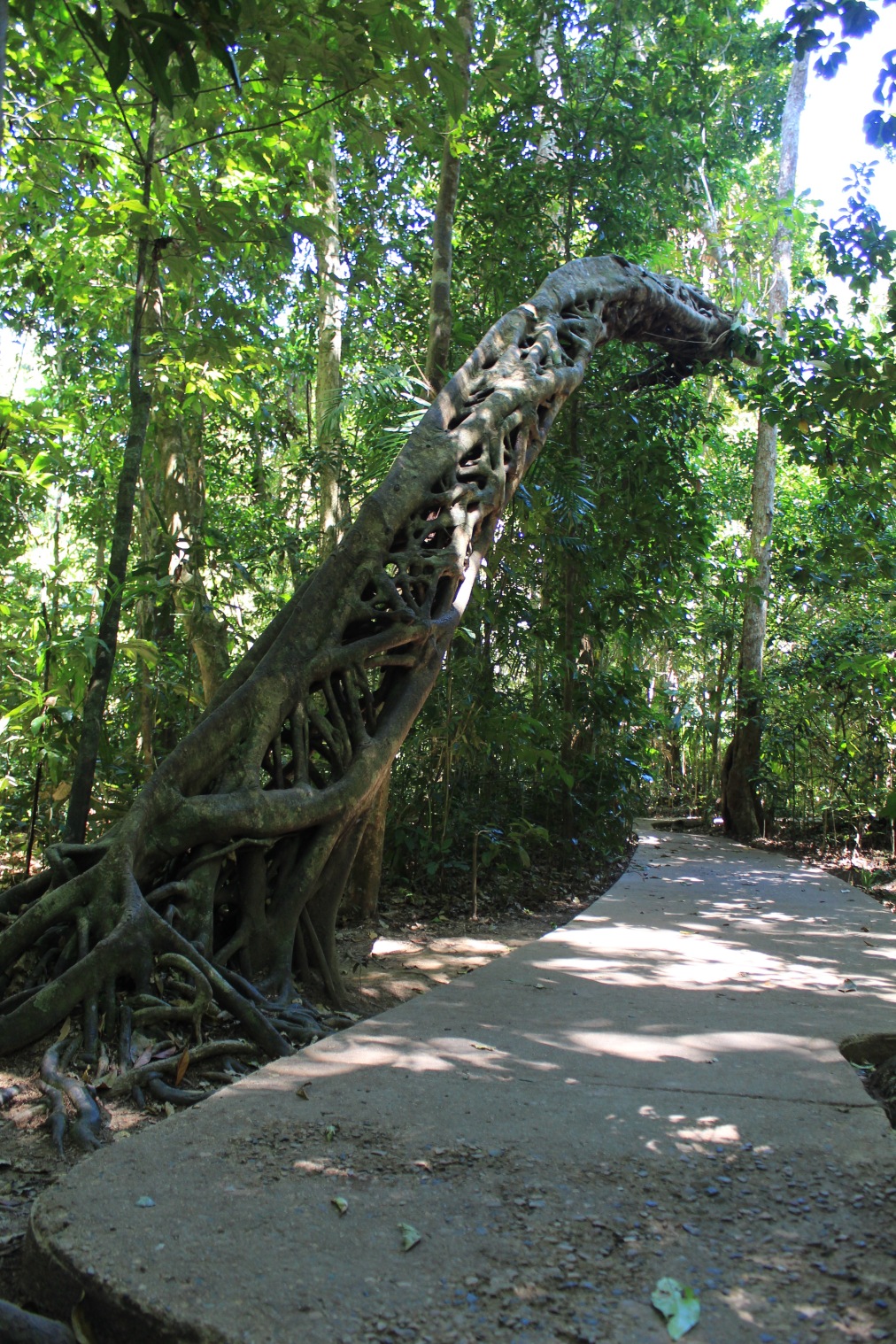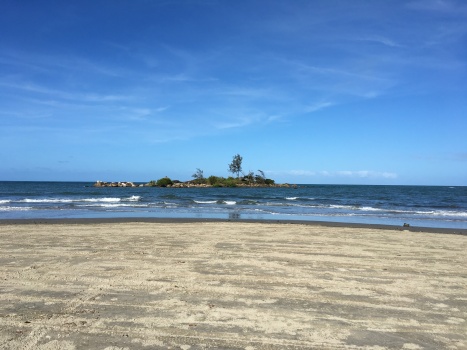My husband and I recently escaped the busyness of work and city life of Sydney and took a trip to Tropical North Queensland for two weeks. It was an amazing holiday, filled with adventure and relaxation. We both wanted to see the Great Barrier Reef before the bleaching gets worse and we’ve never seen it before. I was also equally excited to see the Daintree rainforest and all the unique flora that make up the vegetation in the world heritage forest. To share a bit of my trip and maybe some great holiday ideas too I have split it up into two blog posts: this one, about the rainforest, and the next, will be about the reef (stay tuned!).

We flew into Cairns, and then headed up to the Daintree for four nights, we stayed in Cow Bay and then Cape Tribulation up there and I would 100% recommend staying in the rainforest. A lot of people stay in Port Douglas or Cairns and do shorter day trips to the rainforest, but I don’t think you get the full experience without staying in the actual Daintree. There’s no phone reception in the Daintree and it is a wonderful experience of leaving the real world and being immersed by nature. There’s quite a few bed and breakfasts and hostels that are reasonably well priced and usually include amazing spreads of tropical fresh fruit for breakfast and a taste of the local culture. There’s also a lot of cheap camping spots if you’re on a budget.
Before we drove into the Daintree we did a short walk around Mossman Gorge which was beautiful. We also did a few shorter walks in the Daintree including the Jindalba National Park loop, Marddja Botanical Walk, The Dubuji Boardwalk and loads of walks along the beach at sunset. We also did a longer hike which was around four and a half hours to Mount Sorrow lookout. It was, as the name suggests, sorrowful! It was pretty hard, a vertical climb for 4km with some sections of rope climbing up rocks. The view and sense of accomplishment was well worth it at the top. I’d recommend all these walks, they were a great way to see different parts of the rainforest and different vegetation types including lowland rainforest, highland rainforest and mangroves.
Main priority: we saw three Cassowaries! One was just a baby. It was so exciting. But both of us are rubbish photographers so you’re just going to have to trust us on that sighting.
There are many wonders that capture your eye in the rainforest, I wanted to share a few that stood out for me.
The race for light
Tropical rainforests are areas of vegetation with a closed upper canopy of leaves above the vegetation below. The Daintree is a tropical rainforest in Australia which covers approximately 1,200 square km and it occurs in a region with constant warm temperatures along the North-east coast of Queensland. This region of rainforest is one of the oldest living rainforests in the world with some of the plant species decesdents dating back to 110 million years ago. The Daintree receives high amounts of rain (at least 1.3m of rain per year). Tropical rain forest soils contain less organic matter than temperate forests, however, the plants are able to obtain nutrients from the decomposition of plant and animal material by various organisms in the soil.
Therefore, the one limiting factor of these environments is the sunlight. As you walk through the really dense sections of the forest it is a scramble for plants to gain sunlight and every inch of space is covered by palms, trees, conifers, ferns, climbers and scramblers. Vines use the trunks of larger trees to creep their way to the upper canopy to expose their leaves to light. Epiphytes perch upon tall branches to obtain their sunlight and create their own soil by degrading leafs and branches fallen from the trees above. Broad leaved ferns and palms in the lower canopy stretch their leaves far and wide, some up to 1-2m in diameter, to reach as much sunlight as possible for their growth and survival.





The colour
It may be cliche, and very obvious, but I was still in awe of the lush green colour of the rainforest, it is a completely different scene to the vegetation around Sydney that I am used to.
Bright green landscapes on every path you take // Creeks and streams that flow through the rainforest

Extremely high plant diversity
Rainforests make up approximately 70% of the worlds plant species, and they only cover 8% of the earth’s land surface. The Daintree is a reflection of this as every step we took there was a new plant or a different leaf type. I sympathise with any plant ecologists out there who do field work in the tropics and have to identify these species (if that’s you, I am in awe)! On that note, here are just a few (and by few, I really mean minuscule spot relative to all the species out there) of the plant species we came across in the Daintree.







And here’s some cool fungi, which I haven’t identified, but it looked pretty
The mangroves
The Marddja botanical walk is a continuous board walk over the mangroves with great descriptions of the species and biology of the mangroves. We also saw loads of mangroves when we did a croc cruise on the Daintree river (and saw some crocodiles too!). I love how well adapted they are to their high water, high salinity environment.

Yarrabah
Towards the end of our trip, we were able to experience a pretty cool day at Yarrabah which is an Aboriginal community about an hour out of Cairns. My husband has an old high school friend, Josh, who lived in the community for a few years and is now living in Cairns so we caught up with him and he took us on a whirlwind tour of the environmentally and culturally rich area. All the people in the community we’re endlessly welcoming and generous, Josh knows just about every single person we passed (and there were more than I could possibly count) and they were all kind and willing to open their homes and offer water, tea and conversation. We learnt about the rich history of Yarrabah, both it’s good and horribly sad parts. After driving through hectares of beautifully untouched bush and various different towns within the community we reached the long strip of beach on the coast of Yarrabah.


Cairns Botanic Gardens
Once again, my husband was kind enough to spend a few hours with me in the city’s botanic gardens which is a must-do for me on any holiday I take. Although some parts were under construction, the gardens were fantastic and had a great range of tropical species from Australia and also from other tropical parts of the world. They also have a great walking path that shows the evolution of plants from the beginnings of single celled photosynthetic organisms through to ferns, cycads and then flowering plants (angiosperms).
My favourite part of the botanic gardens was definitely the tropical greenhouse. It was filled with hanging ferns, epiphytes, orchids and butterflies everywhere.

Here’s a few of the plants we saw at the botanic gardens. Hover your mouse over the images to see a quick description.
Thanks for reading a very long-winded post. I hope you enjoyed the plants as much as I did. Check them out for yourself sometime soon!
References
http://www.daintreerainforest.com/
















One thought on “Tropical North Queensland: The Rainforest”